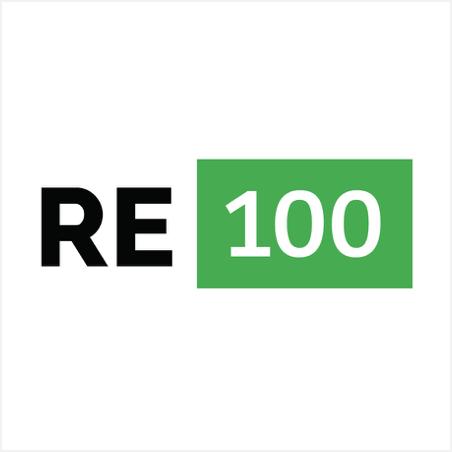In 2018, corporations broke records with global renewable energy power purchase agreements (PPAs) surpassing 13 gigawatts. This more than doubled the previous record set in 2017, and brought corporations to a position to compete with utilities globally as the sector purchasing the most clean energy. A total of 121 companies in 21 different countries entered into PPAs in 2018 – and the majority of which, more than 60% (8.5 GW), are headquartered in the United States.
What’s Driving These Investments?
As explained by Stanford Social Innovation Review, sustainability efforts at the corporate level have evolved from a strictly environmental concern into a “strategic concern driven by market forces.” Businesses are realizing that not only can sustainability measures be profitable in a direct sense by saving corporate customers money on energy bills, there is also a growing trend of companies recognizing the secondary benefits of sustainability. Marketing appeal and customer loyalty, though harder to quantify, are clearly driving companies to invest in environmentally friendly measures, including renewable energy, at a rapidly increasing pace. Today’s consumer, especially Millennials, sees buying power as a way to express personal values.
In response to this growing demand, “corporate citizenship” has moved dramatically toward center stage at many companies. In fact, Forbes reported in 2018 that the number of companies with corporate citizenship executives at the “C-Suite” executive level had increased 75% over where it had been 5 years prior. The vast majority of today’s CEOs and emerging business school students recognize the priority role sustainability (social, environmental, economic) plays for a successful company:
The increasing demand on corporations to be socially and environmentally friendly (or at least more benign) is beginning to follow a natural path up the supply chain: companies with a desire to showcase their environmental stewardship efforts are upping their expectations of their own suppliers, especially their electric providers.
Who Exactly is Making the Investments?
Clearly the tech industry is leading this movement, working toward powering their massive data centers with clean energy. Renewable energy commitments from data centers are particularly impactful considering the fact that they use energy equivalent to millions of private homes.
Below is a partial roundup of just a few notable recent purchases and commitments by US companies. Many of these companies have made public commitments to powering their operations with 100% renewable energy; so many, in fact, that theres a new term for them: RE100 Companies.
Apple: This RE100 Company purchased enough renewable energy to power 100% of its global facilities across 43 countries in 2018 through various efforts including a 200 MW PPA with an Oregon wind farm.

Facebook: In 2018 Facebook purchased over 2.6 GW (global purchases) of renewable energy. This 2.6 GW brings the company’s grand total to over 3 gigawatts purchased since 2013. Facebook already met its goal of powering 50% of its facilities with renewables by 2018 a year early, and is moving toward their corporate commitment to reduce greenhouse gas emissions by 75% and power global operations 100% with renewable energy by 2020.
Google: The tech giant announced in 2018 that, partially thanks to a whopping 3 GW renewable energy PPA, it reached its goal of sourcing 100% renewable electricity globally.
Exxon: The oil and gas giant purchased 575 MW of solar and wind via a PPA in Texas last year, the first major oil corporation to enter the renewable energy PPA space in order to power its own operations.
Amazon: The online superstore has a stated commitment to purchasing 100% renewable energy to run its data centers as well. However as reported in a recent in-depth report by GreenPeace “unlike other IT leaders such as Apple, Google and Facebook that adopted 100 percent renewable energy commitments, Amazon has remained notoriously opaque when it comes to publicly reporting information about its current energy use and how fast it is growing, making it difficult to assess whether its large contracts for renewable energy [are] keeping up with its rapidly growing data center demand in Virginia.” (Perhaps in part to refute the negative press, Amazon has more recently announced a plan to make half of its global shipments carbon neutral, but not until 2030.)
adopted 100 percent renewable energy commitments, Amazon has remained notoriously opaque when it comes to publicly reporting information about its current energy use and how fast it is growing, making it difficult to assess whether its large contracts for renewable energy [are] keeping up with its rapidly growing data center demand in Virginia.” (Perhaps in part to refute the negative press, Amazon has more recently announced a plan to make half of its global shipments carbon neutral, but not until 2030.)
AT&T: 4 wind projects now under construction as part of AT&T’s commitment to renewable energy will help deliver up to 820 MW of clean, wind energy.
Budweiser: Budweiser parent company ABInBev, the world’s largest brewer, has a goal to power its operations 100% with renewable energy by 2025. Budweiser took didn’t hesitate to toot their own horn during this year’s Super Bowl commercial.
Wal-Mart: Another “100% by 2025” company, Walmart reached an agreement last year with SunPower to install enough solar panels to produce 23 megawatts of power at 2 of its distribution centers and 19 stores in Illinois.
Take a look at the entire list of RE100 companies here.
Smaller companies are catching the bug as well. As reported by BNEF, many small companies are joining the movement and working together to make a bigger splash:
“34 new companies signed their first clean energy PPAs [in 2018], making up 31% of total activity in the U.S. These firms are aggregating their electricity demand to reap the economies of scale from larger solar and wind projects. In many cases, they benefit from partnering with a bigger, more experienced buyer – known as an anchor tenant – who can offer a stronger balance sheet and expertise on accounting and legal nuances when signing a PPA.”
JOBS, JOBS, JOBS
Assuredly as a result in part of these massive purchases, and the expectation that they will continue, the jobs in the renewable industry have taken off. Wind energy growth has been especially sustained in Texas, where 69 million megawatt hours of energy came from wind in 2018, more than double the amount from 2016. During that same two year period, coal’s proportion of Texas’s energy portfolio dropped from 37 percent to less than 25 percent. Several states (including North Carolina and Florida) saw renewable energy jobs top the charts last year. Solar panel installer was the fastest growing job in 2018 in California, New Mexico, Minnesota, Missouri, Florida, North Carolina, Delaware, and Hawaii. Wind turbine service technician was the fastest growing job in 2018 in Iowa, Nebraska, Colorado, and Texas.
As explained by BNEF’s head of corporate sustainability Jonas Rooze, “these initiatives have created an entire new universe of opportunity for utilities, clean energy developers, and investors.” And if these trends continue the jobs will keep coming.



